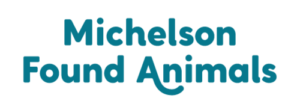Original Article: https://blog.theanimalrescuesite.greatergood.com/whales-microplastics/
In 2021, a group of researchers discovered that whales eat substantially more than we had thought. In many cases, it was three times the prior estimates. Now, members of the same team have discovered that whales are consuming large amounts of something else: microplastics.
Research recently published in the journal Nature Communications measured how many of these prevalent bits of plastic had made their way into whales’ diets. According to the findings, the biggest whales could be ingesting up to 10 million pieces on a daily basis. Rather than the water, though, it appears to be coming from their food.

Matthew Savoca, study co-author and postdoctoral scholar at Stanford’s Hopkins Marine Station, explains, “They’re lower on the food chain than you might expect by their massive size, which puts them closer to where the plastic is in the water. There’s only one link: The krill eat the plastic, and then the whale eats the krill.”
For those that eat the most krill, blue whales, the issue is most pronounced. The team found that they were consuming up to 10 million pieces of microplastics per day. Other krill feeders also had figures above 1 million. That includes fin whales, who eat a bit of fish, as well, whose figures ranged from 3 million up to 10 million. For humpback whales, whose diet is a bit different, with a focus on fish, the figure was about 200,000 on a daily basis. For each species, though, the plastics were mostly coming from the prey.
These estimates were calculated from microplastic concentration measurements off the coast of California, along with logs detailing where hundreds of tracked whales fed between 2010 and 2019. Savoca notes that these numbers could be even higher in other, more polluted waters.

The team says these findings are concerning, as it’s possible that microplastic consumption could impact the growth and health of these species.
Shirel Kahane-Rapport, the lead author who was a PhD student at Stanford during this research, explains, “We need more research to understand whether krill that consume microplastics grow less oil rich, and whether fish may be less meaty, less fatty, all due to having eaten microplastics that gives them the idea that they’re full. If patches are dense with prey but not nutritious, that is a waste of [whales’] time, because they’ve eaten something that is essentially garbage. It’s like training for a marathon and eating only jelly beans.”

The study is another sign of how pervasive microplastics are, with past research even finding them deep in human lungs.
Would you like to help reduce microplastic pollution? There are plenty of things you can do, including changing your laundry routine by washing clothes less frequently with shorter and colder cycles, using beauty and cleaning products without microplastics, and pushing corporations to use less plastic and supporting those that have cut back.
Source: The Animal Rescue Site Blog












